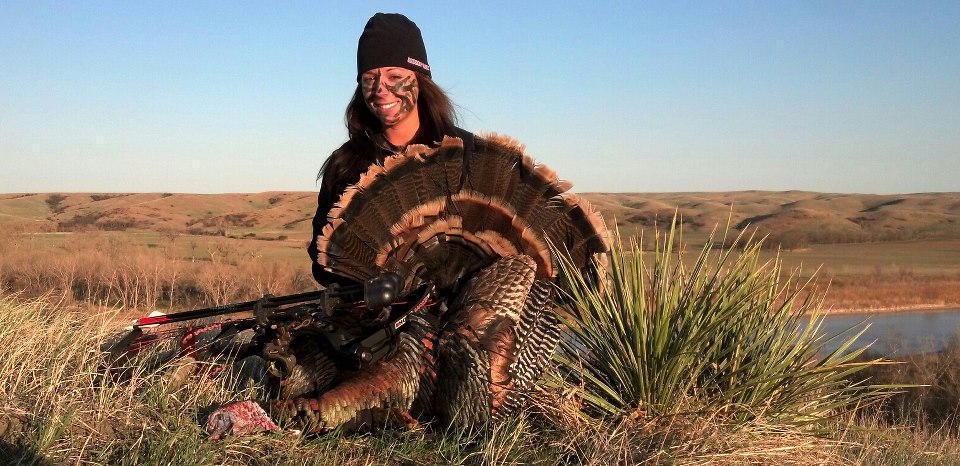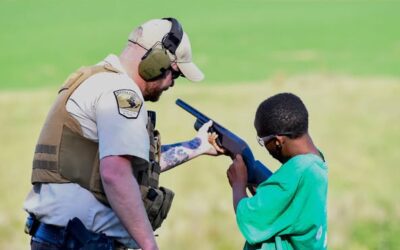I can’t wait until old man winter releases his grip on the upper Midwest and spring arrives when I can hit the woods to begin another season to pursue spring turkey.
This will be my forty-first season where I hope to add my 104th bird to my turkey log. This year, I’ll have three Nebraska tags and help my Son-in-Law Matt and grandson Teddy to tag their first birds in South Dakota.
It’s a good time to get out, spend some time in the woods doing a combination turkey scouting and shed hunting trip. Deer general; shed their headgear in mid-February, but not all deer shed at the same time. It’s possible you will find sheds shortly after the rut. While I’m out looking for sheds, I have my eye out for turkey sign as I hunt sheds in the same areas where I hunt turkeys.
When my camera crew and I are seriously thinking about turkey hunting, the first thing we need to do is to put together some sort of a plan.
If you are hunting locally, putting a plan together doesn’t take much time, but if you’re looking at hunting in a different area or even a different state, making a plan will be very important.
If I’m going to be hunting in a different state, I start by checking the web sites of the state’s Game and Parks or DNR I’m looking at getting a permit. If they have a lot of information and columns devoted to turkey hunting, it’s a good bet there a good numbers of the birds in the state.
After looking at the South Dakota Game & Parks site where I had hoped to have the opportunity to do some turkey hunting with my son in law and grandson, I was disappointed to find out the county they would be hunting in, didn’t issue any nonresident permits, I had to re-plan the hunt.
We would have to start checking around at the states where we would have a chance at obtaining a permit; I’ll grab the phone and contact the game department of the state. This is where I obtain as much information as I can from their experts. I’ll talk with the people that spend a lot of time in the field and have their finger on what’s happening as far as turkey numbers. This information helps me to zero in on an area with good numbers of birds and if I’m lucky, I may even be able to obtain some names of folks in the area that may allow hunting.
I choose a zone or area where I have a good chance of getting a permit. Then it’s that anxious time, waiting to find out if you were successful on the draw. Once I know I have a permit or tag I look for any public land in the area, if that area happens to be one the game department was high on, I get an aerial map of it and see what’s there, checking out any heavily wooded areas for possible roosts and areas where the birds could feed.
I’ve hunted turkeys in Minnesota, Iowa, South Dakota, Missouri, Kansas and Mississippi and got my best information from those states Game & Parks-DNR’s. Some of them have turkey density and harvest information that helps us to choose what area to hunt.

Team Outdoorsmen Adventures member Nicole Grev, Pierre, S.D. with a South Dakota gobbler she took last season.
As much of our hunting was on public ground, we avoided opening weekend, as there are just too many folks out in the woods during opening weekend. Before I avoided opening weekend of the turkey season, I called almost as many hunters in as I did turkeys. When we head out to film a turkey hunt, there are at least two people with us and when it comes to calling critters, be it, waterfowl, turkeys or deer, the less people you have to compete against the better.
On many of our hunts, generally, the first time we see the ground we will be hunting will be the day before when we arrive in the area. Which means there isn’t a whole lot of pre-season scouting; this is why we rely on aerial maps and the advice from the local game officials?
The first thing we will do upon arriving, is to carefully look over our aerial map, trying to pick out those areas where the birds may roost and possible food sources as wells as any funnels going from their roost to a feeding area. A funnel is anywhere two terrains come together, such as a valley between two forested areas. Funnels are good places to set up as it narrows down the bird’s path, putting the turkeys within shotgun and bow range.
Next, we do a drive around of the area, comparing what’s there with what is on the aerial map. We also like to stop by any adjourning landowner to introduce ourselves, to see if they have seen any birds and ask them if it’s Ok to hunt on their land, should the birds move onto their land off the public ground.
Then it’s sit down time for us to put a plan together so when the season opens, we will be fairly close the right place ready to go.
We always leave enough time prior to the sun down, to be out and use our locator calls, our crow, owl and coyote howler to get the birds to shock gobble. If that happens, armed with the information from the game department, our use of aerial maps, the talks with landowners and a gobbler giving away where he spends the night, we now have a plan
The next morning before the sun appears in the eastern sky, it’s time to head out and try locating their roosting areas by getting close and using our locator calls.
As the sun appears in the eastern sky, we have our decoys out, backs against the tree, using soft tree calls, letting the Toms know where we are and ready for another opening day.





0 Comments